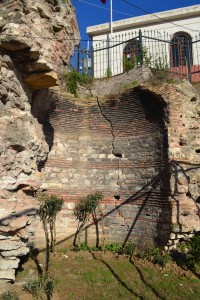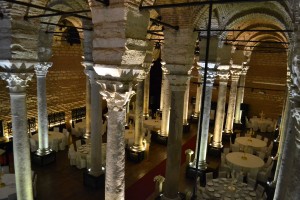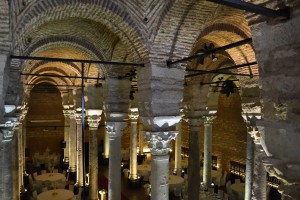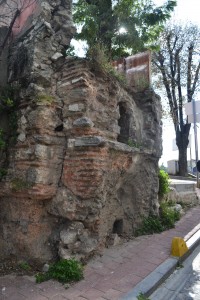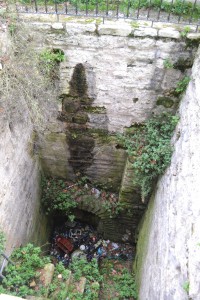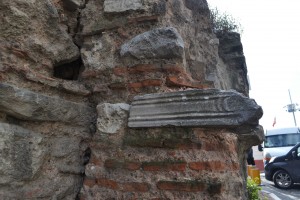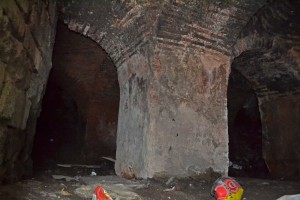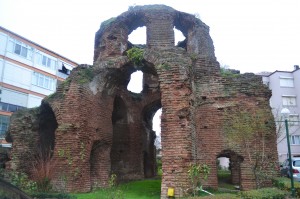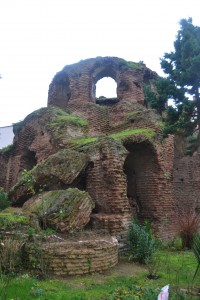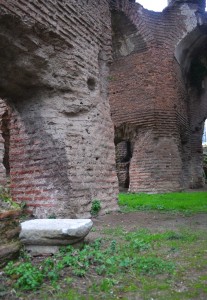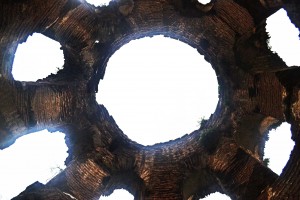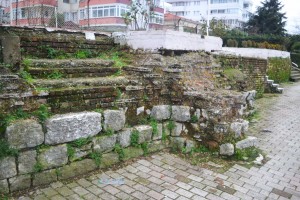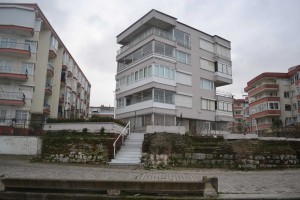Between 1830 and 1834, Constantius I was the Ecumenical Patriarch. He seems to have been irritated at the haphazard manner in which information about the various Byzantine churches in Istanbul had filtered down the ages to him. He embarked on a campaign (similar to the one being waged at enormousfish.co.uk) to identify these recalcitrant churches in a definitive and Orthodox manner. He examined records from the time of the 1204 Latin invasion of Constantinople.
Emperor Alexios V Doukas Mourtzouphlos apparently set up camp by the Pantepoptes Monastery and watched the movements of the Venetian fleet in the Golden Horn near the Church of St Mary of Blachernae. Constantius used contemporary accounts to place the Monastery of Christos Pantepoptes on the site of the Eski Imaret Camii in the Zeyrek area. Pantepoptes means ‘the all-seeing’, an appropriate name for a place from which one could observe goings-on in almost all of the Golden Horn. The great Alexander van Millingen accepted this identification and told a rather lovely version of the 1204 story in his 1912 tome about the Byzantine churches in Istanbul.
Since then, the identification of the lovely little red church in Zeyrek has been set in stone. Cyril Mango, the eminent English scholar of all things Byzantine was having none of this. He produced a rather elegant dismissal of all arguments that placed Pantepoptes at the current Eski Imaret Camii (or Medrese). Not the least of his points was that the upper part of the Golden Horn where St Mary of Blachernae is situated is not visible from Eski Imaret Camii. Mango places the Monastery of Christos Pantepoptes on the site of Yavuz Sultan Selim Camii, the terrace of which has a stunning view of the Golden Horn. This was begun in 1520 and the determination of the great Sultan Süleyman to provide a fitting monument for his warlike father presumably swept a lot of existing buildings away.
There is a lot of Byzantine stuff around the Selim Camii, not least of which is the enormous Cistern of Aspar, the construction of which began in 459 in the reign of Marcian. The open cistern is now a sunken garden. Marcian’s name lives on in the imposing column of that name, which is down the hill a little. There is also a ridiculously pretty closed cistern close to the south side of the Cistern of Aspar. This is now a Duğun Sarayı (venue for wedding receptions) although when I chanced upon it in 1991, it was a banana warehouse.
Byzantine sources suggest that there were many monasteries in this area but omnivorous building work has swallowed these. There must be something interesting beneath the Yavuz Sultan Selim Camii but while that stands, we must be content with the fragments in its vicinity which, if Mango is right, are probably remnants of the Monastery of Christos Pantepoptes.
On the south slope beneath the mosque, there are some distinctly Byzantine remains. Dr. Ferudun Özgümüş, that champion of subterranean Constantinople, has amassed a reasonable amount of evidence that this is the Palace of Bonos (or Bonus). Mango disagrees and places the palace closer to Fatih Camii. In any case, it seems likely that the site contained both a palace and at least a church. The cascade of Byzantine stone and brickwork from the retaining wall immediately below Yavuz Sultan Selim Camii down to Haliç Caddesi hints at amazing things to be found. I share the incredulity of Dr. Özgümüş when he compares the glaringly obvious archaeological richness of the area with the paucity of study that has been done there.
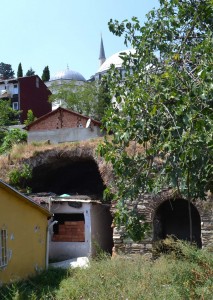
Large vaults on private property. Yavuz Sultan Selim Camii visible at top of hill
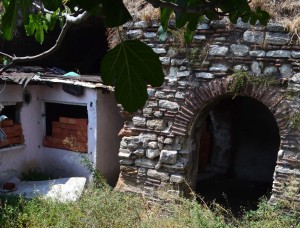
Substantial Byzantine buildings 20m south of the lower wall of Sultan Selim Camii
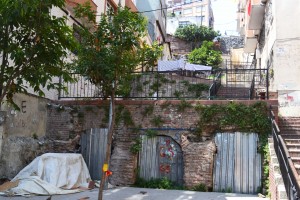
Plenty of old Constantinople in this view northward from Haliç Caddesi
Behind the Fatih Belediyesi iron, there is a solid vault composed of brick domes supported by hefty, square-sectioned columns.
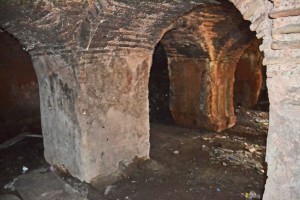
This appears to be a weight-bearing structure, differing from other, more ornate vaults in the vicinity
Mango, Cyril (1999) Where at Istanbul was the Monastery of Christos Pantepoptes? National Documentation Centre, Athens. Available online at: http://www.deltionchae.org/index.php/deltion/article/view/1196/1121
Özgümüş, F. (2002) Notes on the Antique Palace of Bonus in Istanbul. In Sanat Tarihi Arıştırmaları Dergisi 16, 2001 – 2002. Available online at: https://www.academia.edu/20288863/Some_Short_Notes_on_the_Palace_of_Bonos_in_Istanbul_Turkish_with_English_Translation_ Accessed 2nd Aug 2016
Van Millingen, Alexander (1912): The Byzantine Churches of Istanbul. Available at http://www.gutenberg.org/files/29077/29077-h/29077-h.htm

Posted January 10, 2015 Posted by Adam in Uncategorized
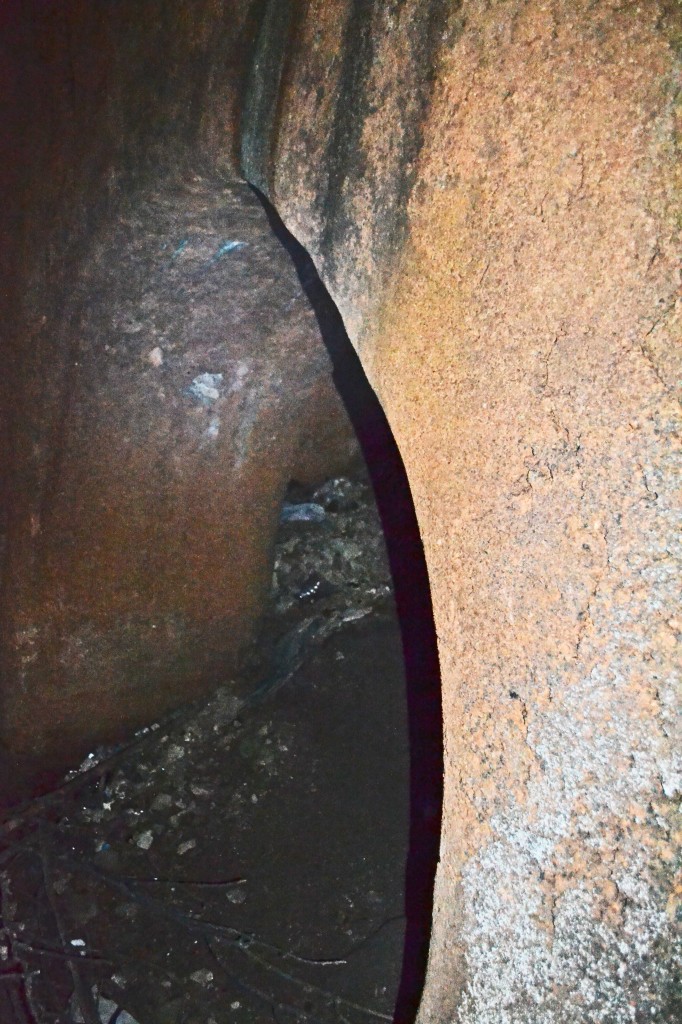

Posted January 9, 2015 Posted by Adam in Uncategorized
The city of Strobilis was established in antiquity on the Bithynian side of what is now the Gulf of Izmit, a place where travellers on the way to Prousa (now Bursa) could rest after the short sea crossing. After the establishment of Constantinople in the 4th Century, Strobilis was referred to as Pylai and is now called Çiftlikköy. For a while, it appears to have been commonly called Karakilise after this rather lovely brick church (40.668449, 29.316273).
Justinian appears to have closed the road through Nicomedia (Izmit) in the 6th Century (Özger-Byvas (2012) p8), which increased traffic through Pylai. Being the least swampy area for some distance, this became most important port in western Bithynia. The small city appears to have become prominent from the 11th century when some of the later Byzantine emperors built palaces there.
Fragmented Byzantine remains can be found in the area but intact buildings are rare. Karakilise seems to have been built in Justinian times. It is unusual in being built completely of brick rather than of alternating courses of brick and stone. It clearly had a makeover in Paleologian times and the existing form of the church is late, rather than Justinian, Byzantine. It is a cross-in-square church with a high drum from which the dome has collapsed.
It sits uncomfortably within the fences and buildings of Başkent 1 Sahil Sitesi, an aging resort complex, sparsely populated in winter and giving the impression that it will crumble away long before the church. Karakilise has survived many earthquakes and, despite having no maintenance since the fall, survives relatively intact, albeit skeletal.
Mamboury studied the building in 1947 and postulated an 8th century foundation date. Mango investigated in 1962 and thought a 5th century origin seemed more likely, referring to the edifice as a baptistery (Jevtik, 2016). In 1976, Mango called it a ‘cruciform, secular building’ (Mango 1976). Perhaps its role in the place here was similar to that of the Octagon in the Great Palace in Constantinople – an impressive churchlike building for the pleasure of the emperor.
Close by are the remains of a fortress built by Manuel Comnenus in the mid-12th century. This must once have been a wonderful exhibition of Byzantine architecture.
Jevtik, I. (2016) Yalova, Çiftlikköy, ancient Pylae or Pylai, Yalova Termal, ancient Pythia. Limen Project. Available online at: http://www.limenproject.net/wp-content/uploads/2014/07/yalova.pdf Retrieved 29 May 2018.
Mango, Cyril (1976): Byzantine Architecture. Abrams, New York.

Posted January 8, 2015 Posted by Adam in Uncategorized
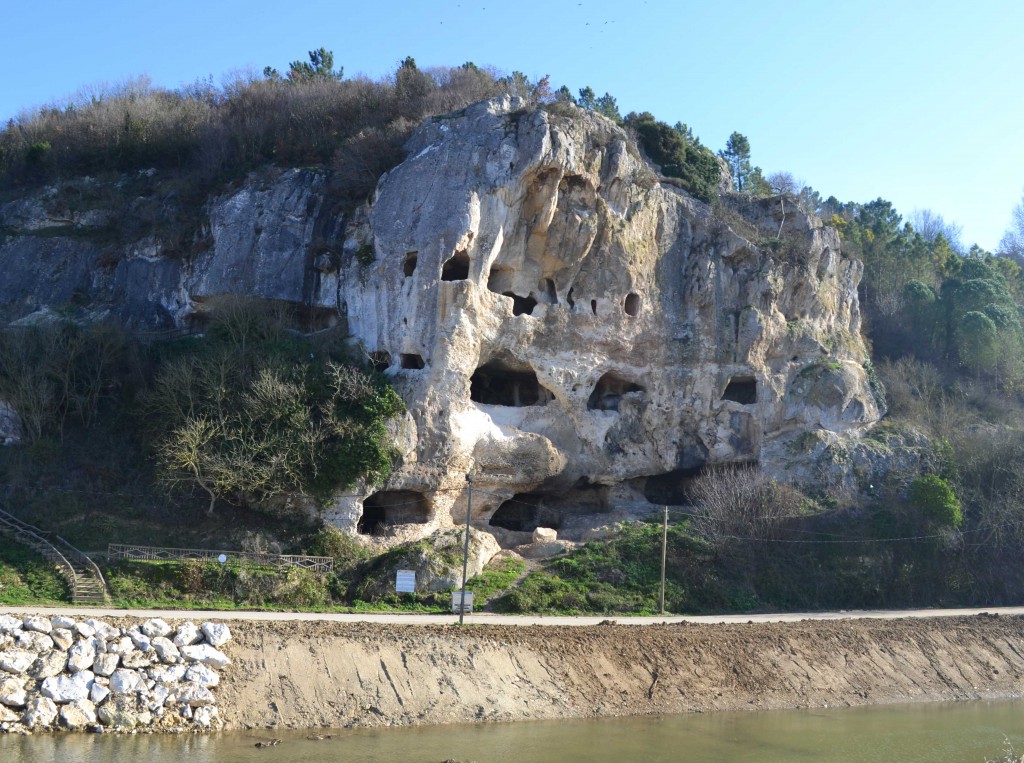

Posted January 7, 2015 Posted by Adam in Uncategorized
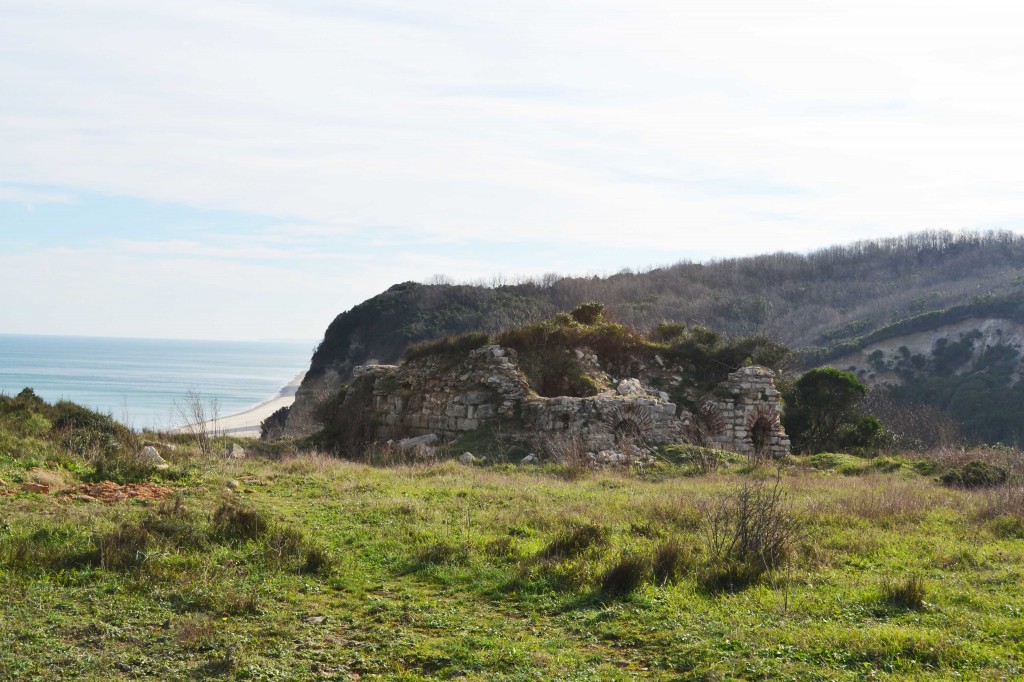

« Previous Entries Next Entries »
